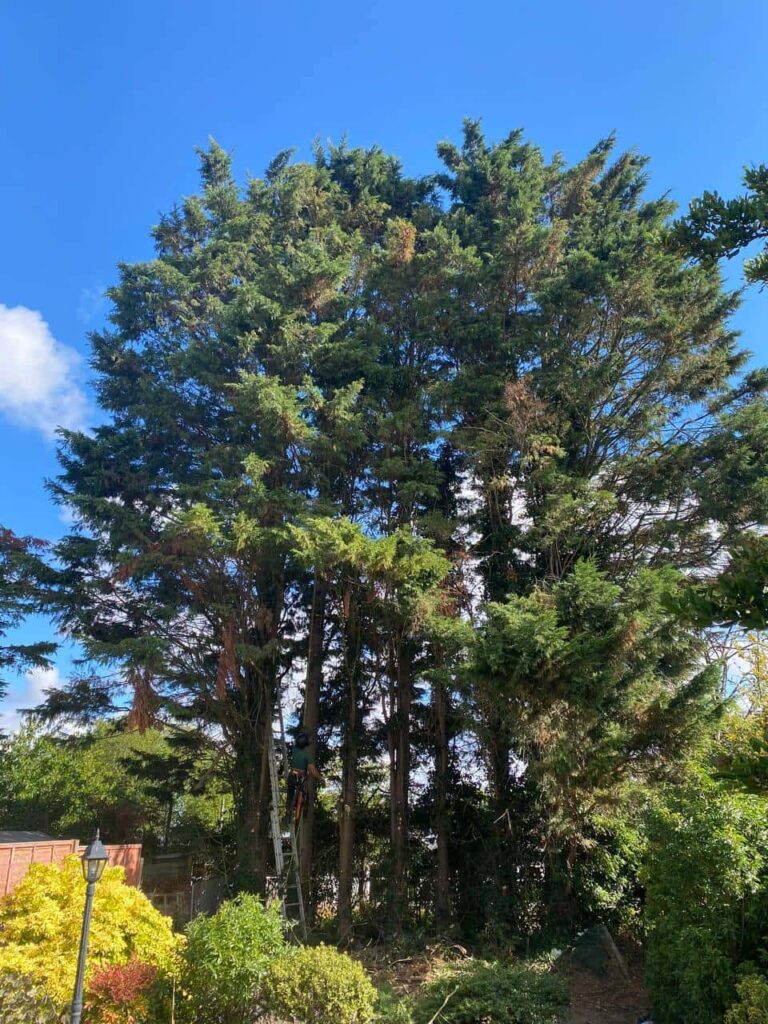Introduction
Tree surgery is more than just cutting down branches—it’s about maintaining tree health, improving safety, and enhancing the landscape. Whether you’re a homeowner, land manager, or business owner, knowing the right techniques can help you make informed decisions about tree care. Skilled professionals apply a range of methods tailored to each tree’s species, condition, and surroundings.
At Stowmarket Tree Surgeons, we use industry-standard practices to deliver effective, long-lasting tree care across Stowmarket, Suffolk. Below, we explore seven essential tree surgery techniques that genuinely make a difference in both tree health and property safety.
1. Crown Reduction
Crown reduction involves carefully cutting back the outer branches of a tree’s canopy. This technique is ideal when a tree has outgrown its space or poses a risk to buildings or overhead wires. Done correctly, it maintains the tree’s shape while reducing wind resistance and overall weight.
2. Crown Thinning
Crown thinning enhances light penetration and air movement through the canopy. Rather than reducing the tree’s height or size, selective internal branches are removed to ease the weight of dense foliage. This method helps prevent disease, especially in areas prone to dampness.
3. Crown Lifting
This technique focuses on removing the lower branches to raise the canopy’s height. It’s particularly useful for improving access below trees, such as driveways or pavements, and also enhances visibility and light for nearby plants or structures.
4. Pollarding
Pollarding is a traditional method of pruning where the upper branches of a young tree are removed, promoting a dense head of foliage and branches. It requires regular maintenance but is useful in controlling tree size and encouraging new growth.
5. Deadwood Removal
Over time, trees naturally develop dead or decaying branches. Removing these safely prevents them from falling unexpectedly, which is especially important near roads, footpaths, or buildings. It also helps improve the tree’s appearance and health.
6. Formative Pruning
This early-stage pruning technique is applied to young trees to guide their future structure. Removing poorly positioned or competing branches reduces the need for major corrective work later in the tree’s life and supports a strong, balanced framework.
7. Tree Felling and Sectional Dismantling
When a tree is dead, diseased, or unsafe, removal may be necessary. Sectional dismantling is used in tight spaces where the tree is cut down in pieces, using rigging and rope systems to lower each section safely. This method minimises disruption and ensures safety on-site.
Conclusion
Effective tree surgery requires a balance of precision, knowledge, and experience. The techniques listed above are not only about aesthetics—they’re critical to preserving tree health and protecting people and property. If you’re looking for reliable, professional tree care in Stowmarket, Suffolk, Stowmarket Tree Surgeons are here to help. Reach out today to discuss the best approach for your trees and landscape.
Call us on: 01449 706 096
Click here to find out more about Stowmarket Tree Surgeons
Click here to complete our contact form and see how we can help with your tree needs.

